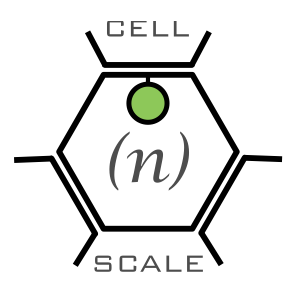Scientific objectives

-
Axis 1. Supramolecular assembly & subcellular structures
The large variety of cellular functions emerge as a result of the proper distribution and synchronization in time and space of a multitude of components. This "orchestration" relies for a large part on the formation of local assemblies of molecules that form clusters at the cell membranes, in the cytoplasm or in the nucleus, leading to spatiotemporal heterogeneities that play a crucial role in controlling the distribution, amplitude and dynamics of exchanges between cellular organelles, or in organizing and remodeling cytoskeleton components. Identifying these protein assemblies and deciphering the biochemical and physical origins of these local heterogeneities is thus particularly important for understanding cellular functions such as adhesion, signaling, trafficking, gene expression or DNA replication. Moreover, at a more coarse-grained level, the cell is made of many different types of internal organelles with specific biochemical "identities" that are precisely distributed in space. How sub-cellular heterogeneity emerges from intracellular exchanges and biochemical reactions and from cytoskeleton organization is still an open question. Teams of the LabEx Cell(n)Scale will tackle these challenging issues, leveraging their cross-disciplinary experience and a wide arsenal of techniques ranging from cryo-EM and super-resolution to optogenetics and micromanipulation, the development of reconstituted systems and theoretical modeling.
-
Axis 2. Regulation of cellular functions
The cellular scale has a peculiar role in biology. Indeed, it is the smallest scale at which autonomous biological systems are found. In addition, in metazoans, cells are the building blocks for tissues and organs. Molecular and cellular processes such as signaling, membrane trafficking or cytoskeletal dynamics cannot be studied in separation but should be considered as integrated events at the cell scale. Biochemical and biophysical cues from the extracellular environment (from neighbor cells, the extracellular matrix…) or cell autonomous signals influence cells’ genomic, transcriptomic and proteomic status and impinge on cell fate and functions. Thus, it is essential to understand how coordination of elementary cell mechanisms and regulation by cell and environmental cues contributes to homeostasis and to fundamental cell functions such as cell migration or cell division. Reciprocally, cells’ biomechanical and biophysical properties influence the organization and function of the tissues they belong to and modify their environment. Also, of tremendous importance, dysregulation of biophysical and mechanical properties of cells and their environment can contribute to disease initiation and progression such as in life-threatening cancers. Thus, it is of great opportunity for biologists and physicists within this LabEx to pursue the understanding of how cellular functions emerge as a coordination of molecular and supramolecular processes and how cells develop an internal representation of their environment to adapt and interact with it. The challenge for this interdisciplinary action focused on cellular functions is to develop new tools and approaches to integrate the complex interplay between the numerous chemical and physical processes that compose the cell at different scales. From the biological point of view, we still lack an understanding of how the diverse subcellular activities, such as gene regulation, protein trafficking, signaling, are coordinated in space and time to achieve the cellular functions. We also have little knowledge about how a combination of diverse environmental cues is mapped into specific cellular states. From the physical perspective, we investigate how global cellular processes are self-organizing from a complex mixture of elementary molecular events. We address these challenges around three main directions: cell migration, cell division and cell plasticity.
-
Axis 3. Multicellular assemblies
Intercellular communication is a key property of organized living systems. It leads to transfer of information and coordinated regulation of key biological functions within cell populations, and the development of normal tissues or tumors is characterized by both biochemical and mechanical patterning. Here, we focus on describing in a quantitative manner how the physical cues of tissues impact their normal and tumorigenic states - for instance in the context of collective cell migration, tissue proliferation and morphogenesis, or cell interactions with the microenvironment and cell competition. To do so, we use novel technological developments and interdisciplinary approaches that involve developmental and cell biology, as well as experimental and theoretical physics. Our research projects rely on different systems, from whole organisms to organoids or “organs on chips”, as well as on theoretical modelling, whether based on continuous approaches or numerical simulations.




